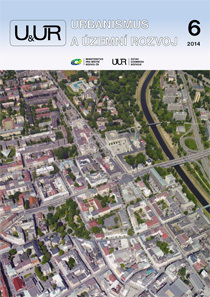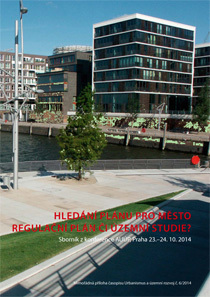

The role of regulatory plans, by Jan Fibiger
Regulatory conditions for the development of Czech and Moravian towns have a long tradition. Since the Middle Ages systematically designed historic towns have been given purposeful directions for their development by fixed regulations, which were transformed into regulatory plans in the first half of the 20th century. Regulatory plans have delimited zones and space for public infrastructure (technical, civic and of transportation) and stipulated the conditions for public space in both built-up and undeveloped zones, the latter being mainly areas of nature. It was obvious that both the procurer and the contractor of the plan were state-run organizations, superior in the territory, and their foremost interest was society-wide profit independent of partial and local interests.
The influence of public zones on prices of construction plots in suburban settlements, by Alena Mocová
In recent years two different directions in the development of new low-rise housing construction have been evident: on one hand low-rise constructions with limited public zones are built on cheap plots, on the other there are numerous locations with a better housing environment and more generously conceived public zones.
Ostrava’s new spatial plan, by Cyril Vltavský
The former spatial plan of Ostrava, originated in 1994, was in force for a period of twenty years. In May 2014 the municipal government approved a new spatial plan that had been in preparation since 2009. Therefore Ostrava became one of the first regional capitals to use a valid spatial plan in compliance with the new Building Act. The procurement of new and alterations to existing spatial plans of municipalities is today a typical phenomenon that occurs wherever you look. As was the case with some other cities, the reason for the decision to alter Ostrava’s spatial plan was the new Builidng Act, which in fact enforces such adjustment. Failure to react to this requirement could have had far-reaching consequences for the municipality. It would have been divested of its spatial plan and thus the municipality would no longer have been able to regulate its own development; Ostrava would have witnessed haphazard and non-conceptual building development and probably given up financial subsidies, depending on its conformity with spatial planning documentation.
The construction of Jičín by order of Generalissimo Albrecht von Wallenstein, by Dana Novotná
The period of the Thirty Years’ War is usually understood as one of devastation and decline of settlements, but this is a retrograde, somewhat skewed view. Our ancestors certainly did not experience this period as one long war, and, excepting those who emigrated for religious reasons, they lived and made buildings as in other times. Whole, interesting settlements originated in the first fifteen or twenty years of the war. The best known builder of these times is undoubtedly Duke Albrecht von Wallenstein, whose meritorious work in the new urban structure of the town of Jičín is still easily noticeable, although it represents only a fragment of his original intent.